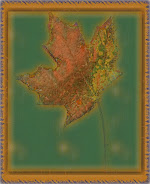 We can rediscover the Shekhinah throughout Jewish text, throughout history, and throughout the natural world. God in the Bible is sometimes mother eagle and sometimes Holy Wisdom crying out in the streets. In the Talmud and midrash, the Divine is sometimes portrayed as a nursing mother or as the (female) twin of Israel. In the Zohar, there are multiple feminine God-images, such as Binah (understanding), also known as Immah Ilaah (the higher mother), who is called the womb and palace of creation, the fountain of understanding, the well of souls. Then there is Lilith, a mythic figure whom the tradition demonized but who for some is the embodiment of sexuality and freedom.
We can rediscover the Shekhinah throughout Jewish text, throughout history, and throughout the natural world. God in the Bible is sometimes mother eagle and sometimes Holy Wisdom crying out in the streets. In the Talmud and midrash, the Divine is sometimes portrayed as a nursing mother or as the (female) twin of Israel. In the Zohar, there are multiple feminine God-images, such as Binah (understanding), also known as Immah Ilaah (the higher mother), who is called the womb and palace of creation, the fountain of understanding, the well of souls. Then there is Lilith, a mythic figure whom the tradition demonized but who for some is the embodiment of sexuality and freedom.We also cannot forget that the images and stories of the Shekhinah are connected to traditions of the Divine feminine around the world, from the ancient goddess Inanna, who is described as a warrior for her people just as the Shekhinah is in the Zohar; to the Virgin Mary, who is an intercessor in matters of Divine judgment like the Shekhinah; to Kuan Yin of Asia, who embodies compassion for those who suffer, just as the Shekhinah does. Jews have been afraid to acknowledge the Shekhinah’s relationship to goddesses and goddess-like images because of the traditional Jewish prohibition against idolatry. Yet to deny our connection to the Divine feminine as it is expressed and loved by others is to deny our connection to the human, and feminine, religious experience, and to render invisible some of the sources of our own spirituality.
The Shekhinah, Jill Hammer










No comments:
Post a Comment